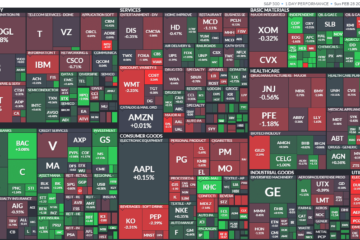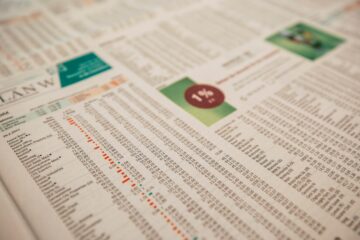A common investment strategy that some people use is dividend investing. This is how it works. You invest in a mature company that pays a regular dividend and you take home those dividend payments to live on. But in order to do that, you have to understand how dividend dates work. You can’t just buy the stock the day before the dividend is paid and expect to get the dividend. There are four important dates that you need to understand when dividend investing. Let me explain.
What Are Dividends?
First, let me remind you what dividends are.
Dividends are really a simple concept when you break it down. Dividends are part of the profit that a company makes that they give back to the shareholders.
Let’s break it down a little more.
When a company makes a profit they can do a few different things with that profit. They can:
- Plow the money back into the business by buying more machinery, getting better office equipment, hiring more workers, giving bonuses, etc.
- Pay down debt.
- Give the money back to the shareholders.
So for the sake of this article, we’ll be talking about #3, giving the profit that companies make back to the shareholders.
With that being said, there are four main dividend dates that you need to be aware of when dividend investing.
Declaration Date
The first important dividend date that you need to know is the declaration date.
The declaration date is simply the date that the company comes out and says that there will be a dividend that will be paid.
It’s really that simple.
For example, a company has a press release on September 15th that they are going to be paying a dividend in October.
The declaration date is September 15th.
Here is what it looks like to far:
Payment Date
The payment date is exactly that. It is the date that the dividend will be paid to shareholders.
For example, a company declares a dividend on September 15th (the declaration date) that will be paid on October 20th.
October 20th is the payment date.
So far so good? The next couple are where people usually get confused.
Record Date
The record date is the date that the company requires that you own the stock by in order to receive the dividend.
This means that although the payment date is October 20th, you can’t buy the stock on October 19th and expect to get the dividend. You have to own it earlier. On the record date.
For example, a company declares a dividend on September 15th that is to be paid on October 20th (the payment date) with a record date of October 6th.
This means that you have to own the stock by October 6th in order to receive the dividend that is to be paid on October 20th.
Ex-Dividend Date
The ex-dividend date is the last one that you need to be aware of. And it is arguably the most important.
Whenever you buy or sell stocks it takes time for that trade to settle.
You have to submit your order, the clearinghouse has to find a seller to offset your order to buy the stock, and the company has to approve it. This process takes one business day.
So the ex-dividend day is the day that you need to buy the stock in order for the trade to process so that you own it by the record date.
The ex-dividend date is one business day before the record date.
Here is an example. A company declares a dividend on September 15th (the declaration date). That dividend has a payment date of October 20th and a record date of October 6th.
This means that the ex-dividend date is the business day before the record date (October 5th). If the record date falls on a Monday, the ex-dividend date is the previous Friday.
Final Thoughts
This is how dividend dates work. They’re not too complicated. But as long as you put in your order to buy the stock no later than the ex-dividend date, you will get the dividend when it is paid out!
I am here to help!
You can do this!
Until next time!



0 Comments